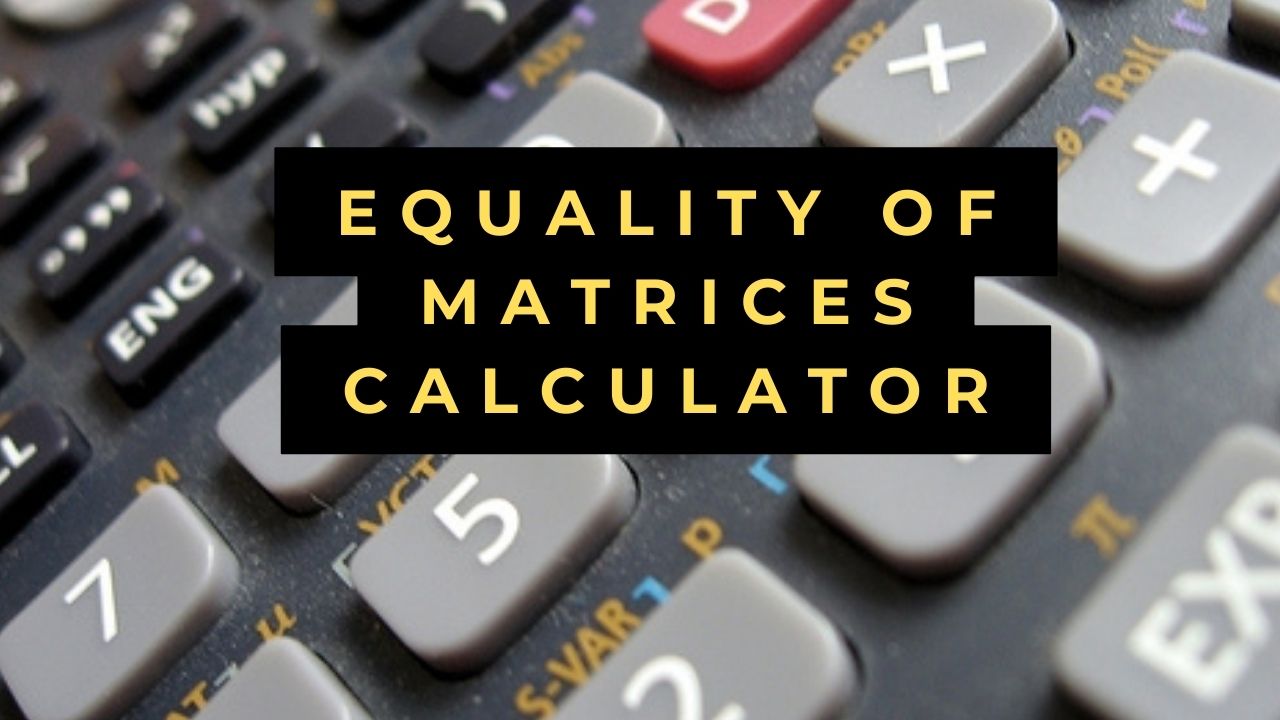Equality of Matrices Calculator
- Ellipsoid Volume Calculator
- Elimination Method Calculator
- Effect Size Calculator
- Double Integral Calculator
Equality Of Matrices Calculator with Steps
Quickly determine if two matrices are equal using the Equality of Matrices Calculator. Learn how to input matrices, interpret results, and address common queries regarding matrix equality. Simplify your calculations today!
Table of Contents
Equality Of Matrices Calculator
Welcome to our Equality of Matrices Calculator guide. Determining whether two matrices are equal is a fundamental operation in linear algebra. In this article, we'll explore how to use the Equality of Matrices Calculator to compare matrices, understand its significance, and address common questions to enhance your understanding.
Equality Of Matrices Calculator Overview
Understanding Matrix Equality
Two matrices are considered equal if they have the same dimensions and corresponding elements are equal. Formally, matrices A and B are equal if Aij=Bij for all i and j, where Aij and Bij represent the elements in the i-th row and j-th column of matrices A and B, respectively.
Importance of Matrix Equality
Matrix equality is important for several reasons:
- Data Comparison: Compare results or datasets stored in matrix form.
- Algorithm Verification: Validate the correctness of matrix operations and algorithms.
- Error Detection: Identify discrepancies or errors in computations involving matrices.
How the Calculator Works
Our Equality of Matrices Calculator provides a user-friendly interface for comparing two matrices. You can input the elements of the matrices, and the calculator will determine whether they are equal.
Step-by-Step Guide to Using the Calculator
- Enter Matrices: Input the elements of the two matrices into the calculator.
- Calculate: Click on the calculate button to determine if the matrices are equal.
- Interpret Results: Review the result provided by the calculator, indicating whether the matrices are equal or not.
Practical Applications
Matrix equality has practical applications in various fields:
- Computer Science: Validate matrix-based algorithms and data structures.
- Engineering: Verify the correctness of numerical simulations and computations.
- Statistics: Compare experimental or observational data stored in matrix form.
Advantages of Using the Calculator
- Accuracy: Provides an accurate determination of matrix equality based on the input matrices.
- Efficiency: Offers a quick and efficient method for comparing matrices.
- Convenience: Accessible online tool for students, educators, and professionals.
FAQs
Q: Can the Calculator handle matrices of different dimensions?
A: No, the Calculator requires matrices to have the same dimensions for comparison.
Q: What if I input matrices with elements in a different order?
A: The Calculator considers the order of elements, so matrices with the same elements but in different order will not be considered equal.
Q: Are there any limitations to the size of matrices that can be input?
A: The Calculator can handle matrices of any size, but extremely large matrices may result in performance issues.
Q: Can the Calculator handle matrices with complex numbers or symbolic expressions?
A: No, the Calculator is specifically designed for matrices with real or numerical elements.
Q: How do I know if the matrices are equal or not?
A: The Calculator will provide a clear result indicating whether the matrices are equal or not.
Conclusion
In conclusion, the Equality of Matrices Calculator is a valuable tool for determining whether two matrices are equal. By following the steps outlined in this guide and utilizing the calculator's features, you can simplify your calculations and verify the equality of matrices.

